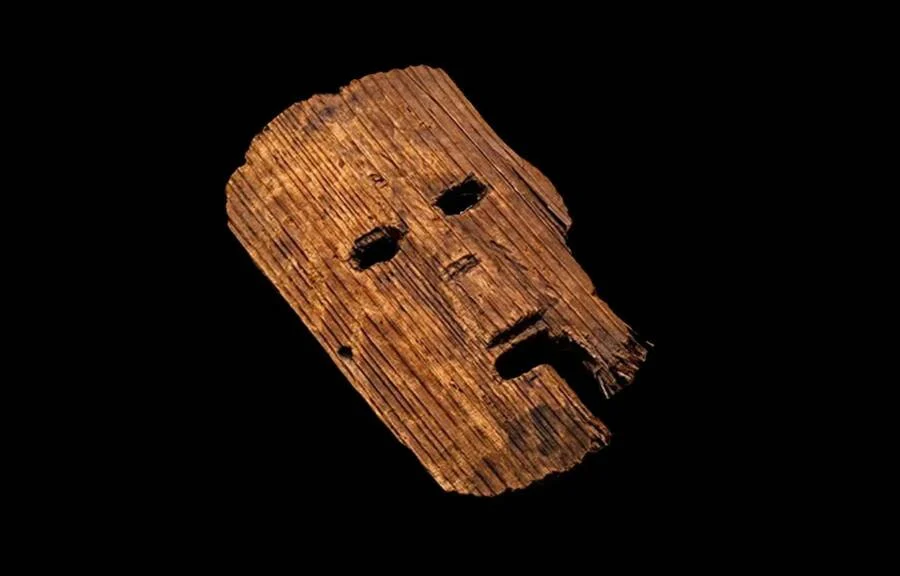In the hustle and bustle of modern-day Osaka, an unexpected link to Japan’s ancient past has surfaced. During the excavation for the extension of the Osaka Monorail, archaeologists stumbled upon a treasure trove of remarkably preserved artifacts, with one stealing the spotlight – an 1,800-year-old ritual mask dating back to the Yayoi period.
Unearthing the Enigmatic Relic
The Yayoi period, spanning from 300 B.C.E. to 300 C.E., marked a transformative era for Japanese society, transitioning from a hunter-gatherer lifestyle to agriculture. Amid the preparatory digs for the monorail expansion, a team from the Osaka Center for Cultural Heritage uncovered a series of well-preserved wooden objects, among which the ritual mask stands out as a captivating find.
Crafted from cedar, the mask mirrors a human face, featuring eyes and a mouth, measuring an impressive 11 inches in length and seven inches in width. Noteworthy is a perforation on the side, suggesting it might have been fastened with a string, sparking speculation on its ceremonial usage.
Unveiling Ancient Riddles
Delving into the mysteries surrounding the mask, opinions differ on whether it was a ceremonial accessory or a display of spiritual significance. The weight of the artifact hints at the latter, raising questions about its potential role in representing a deity.

Kaoru Terasawa, director of the Research Center for Makimukugaku, Sakurai City, posits, “I believe the mask represented a ‘spirit of a head,’ which was believed to be a god in the shape of a human and representing the authority of Okimi.”
A Glimpse into the Yamato Kingship
The connection between the mask and the Yamato Kingship becomes evident, shedding light on the political and religious landscape of the time. The Okimi, leaders of powerful clans in Nara Prefecture during the third to seventh centuries, held ceremonies that likely inspired local leaders to incorporate such masks into their rituals.
Terasawa suggests, “Powerful people who were influenced by the ceremonies of the Yamato Kingship used the mask at festivals.”
Wooden Artifacts: A Window to the Past
Beyond the ritual mask, the excavation revealed other ancient wooden artifacts, including a water bucket and a charred object resembling a gardening hoe. These discoveries, buried 9.5 feet beneath the surface, offer a captivating glimpse into the daily life of the Yayoi period.
Unraveling the Yayoi Period Tapestry
The Yayoi period, pivotal in Japanese history, witnessed the rise of wet-rice cultivation, transforming society into a more agrarian structure. As people settled into permanent communities, new social classes and power dynamics emerged, leading to conflicts over resources.

The Kyoto National Museum highlights the shift from egalitarian hunter-gatherer societies to agrarian structures with distinct social strata. Chiefdoms formed, comprising rulers, an upper class, and the less fortunate who revered their leaders, marking a departure from the equality of the past.
The Mysterious Role of the Wooden Mask
While the wooden mask’s exact role in these evolving social dynamics remains unclear, researchers hypothesize its representation of a god and the upper echelons of society. The artifact is set to make a temporary appearance at the Museum of Yayoi Culture in Osaka Prefecture’s Izumi, inviting visitors to step back in time and marvel at the enigma of ancient Japan.
Featured Image Credit: Osaka Center for Cultural Heritage



